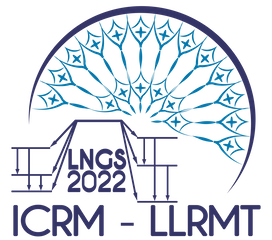Speaker
Description
ABSTRACT
A Certified Reference Material (CRM) is defined in ISO Guide 30 as a RM characterised by a metrological valid procedure for one or more specified properties (in this case content of selected radionuclides) accompanied by a certificate that provides the value of a specified properties, their associated uncertainties and statement of metrological traceability. The certificate reports the characterization results and provides information regarding the appropriate use of the material. There are several characteristics that a certificate may contain as outline in ISO Guide 31. The most important are: instructions for the correct use of the RM, level of homogeneity, certified values and their uncertainties (in this case content of the selected radionuclides), uncertified values (like stable elements content) and period of validity (or expire date). Homogeneity and stability are crucial characteristics of any CRM. Great attention must be paid to the production of them. However, careful production is not enough. Homogeneity assessment and stability evaluation is explicitly required by ISO Guide 35. In connection with the INSIDER project, two relevant reference materials have been chosen to be developed. For this purpose liquid material characterised for radionuclide content and based on liquid effluent tank waste from JRC Ispra has been produced by CMI.
For liquid CRM developed at CMI a questionnaire about radionuclide composition, activity ranges, minimum sample mass (volume needed) and homogeneity level has been distributed to the participants of the INSIDER project in order to define materials as useful as possible to assess the laboratories participating in the inter-laboratory comparisons. It was intended to produce 10 L of this liquid material. The main goal was to test measurement methods and to assess the performances of the laboratories. Radioactivity content in Bq.g-1 for the radionuclides defined in the specification has been determined. Because matrix-matching inactive material is not available the fselected stable elements have been added into the liquid solution. Radionuclide content and stable elements content can be closely matched to the tank waste based on the characterization of a real active material already carried out by JRC-Ispra.
Except of the radionuclide content (characteristic values) we also need to know homogeneity of the CRM. In homogeneity testing, there are two types of homogeneity: within-unit homogeneity and between-unit homogeneity. Within-unit homogeneity is an issue that arises when the minimum sample size specified in the instructions for use (in this case 0.5 L) is smaller than the size of the whole RM unit (which is 10 L). According to ISO Guide 35 testing for within-unit heterogeneity should provide at least 5 degrees of freedom. This can be achieved by taking at least 6 subsamples (in this case m = 8) from a whole bottle and measuring each subsample at least 1 time (in this case n = 3). Sampling scheme used to pick up the units for a homogeneity study is typically one of simple random sampling, random stratified sampling or systematic sampling. CMI has decided for random stratified sampling. Random stratified sampling typically divides the unit into a number of segments of equal size. CMI divided 10 litters of RM into 8 equal parts and from each part took one sample (0.5 L) for homogeneity testing. This type of sampling has been chosen to check possible sedimentation. In the case of non-destructive method (e,g. gamma spectrometry), where the sample allows multiple measurements, n can be greater than 1. In those cases, where n > 1, the data can be evaluated by one-way analysis of variance (ANOVA). The experiment involves two uncertainty components: the repeatability of the experiment (method) and between-sample variation. In the experimental set-up, method repeatability and between-sample heterogeneity of the liquid reference material were estimated by analysing 8 units, 3-times each. The results will be presented. From the results the ANOVA tables were computed and corresponding F-tests were performed to determine 241Am, 137Cs and 60Co homogeneity.

